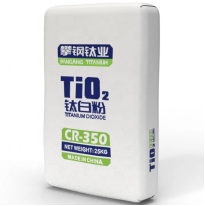
8 月 . 18, 2024 03:01 Back to list
High Purity 98% Anatase Titanium Dioxide for Paint Applications from Reliable Manufacturer
The Excellence of 98% Anatase Titanium Dioxide Paint Grade Factory
In the realm of industrial coatings and pigments, titanium dioxide (TiO2) stands out as one of the most widely used materials due to its exceptional properties. Among the various forms of titanium dioxide, anatase is particularly valued for its bright white color and high refractive index, making it an ideal choice for paint applications. This article delves into the significance of a factory producing 98% anatase titanium dioxide paint grade and its implications for the coatings industry.
Understanding Anatase Titanium Dioxide
Anatase is one of the two main crystalline forms of titanium dioxide, the other being rutile. While rutile is generally considered more stable and is often employed in applications requiring durability, anatase offers unique benefits, particularly in the realm of coatings. The high purity level of 98% indicates that the product is nearly free from impurities, which is critical in achieving optimal performance in paints.
Anatase titanium dioxide is renowned for its excellent opacity and brightness, which allows for effective hiding power in paints. This characteristic makes it particularly valuable in manufacturing architectural coatings, industrial paints, and even artists’ paints. The different particle sizes and shapes of anatase titanium dioxide can also be manipulated to achieve specific effects, such as gloss or matte finishes, providing manufacturers with versatility in product formulation.
The Production Process
Producing high-quality 98% anatase titanium dioxide involves a sophisticated and meticulous process. The primary raw material, ilmenite or rutile ore, typically undergoes a series of treatments, including acid leaching to extract titanium dioxide from the ore. This process not only enhances the purity of the titanium dioxide but also optimizes its particle size, which is crucial for achieving desirable performance in paint applications.
Once the titanium dioxide is extracted, it undergoes calcination, a process where it is heated to high temperatures to improve its crystallinity. The end result is a fine, white powder that can be utilized directly in paint formulations or modified further for specific applications.
98% anatase titanium dioxide paint grade factory

Applications in the Coatings Industry
The demand for high-quality paint grade titanium dioxide is driven by various industries, including automotive, construction, and consumer goods. In automotive coatings, for instance, the bright whiteness of 98% anatase titanium dioxide contributes to the aesthetic appeal and durability of the finish. Additionally, its UV resistance helps in protecting the underlying materials from degradation, enhancing the lifespan of the vehicle's exterior.
In the construction industry, high-performance paints that utilize anatase titanium dioxide can significantly affect the longevity and maintenance of structures. They provide excellent coverage, reducing the need for multiple coats, and their resistance to fading under sunlight ensures that buildings maintain their visual appeal over time.
Environmental Considerations
As a factory producing 98% anatase titanium dioxide paint grade, there is also a growing emphasis on sustainability and environmental responsibility. Manufacturers are increasingly adopting eco-friendly practices in their production processes, such as reducing water and energy consumption and minimizing waste generation. The development of water-based paints that incorporate titanium dioxide is a significant step towards more sustainable options in the coatings industry.
Conclusion
In conclusion, a factory specializing in the production of 98% anatase titanium dioxide paint grade plays a crucial role in the coatings industry. Its high purity and unique properties facilitate the production of high-quality paints that meet the diverse needs of various sectors. As the industry continues to evolve, the emphasis on sustainability and innovation will undoubtedly enhance the importance of anatase titanium dioxide in creating not only aesthetically pleasing but also environmentally friendly coatings. Thus, investing in high-quality titanium dioxide not only contributes to better products but also supports a more sustainable future in paint manufacturing.
-
Lithopone for Plastic & TiO2 R-5568/SK-6658 Masterbatch Solutions
NewsMay.30,2025
-
China Leading Rutile TiO2 Manufacturer - R5566 & R996 Grades Available
NewsMay.30,2025
-
High-Purity Anatase & Rutile TiO2 Powder Trusted Manufacturer
NewsMay.30,2025
-
High-Purity Anatase Products Trusted Supplier & Manufacturer
NewsMay.29,2025
-
Best Price Eco-Friendly Rutile TiO2 Supplier & Wholesale Factory
NewsMay.29,2025
-
Chinese Anatase Titanium Dioxide for Ceramic Glaze Reliable Supplier
NewsMay.29,2025
